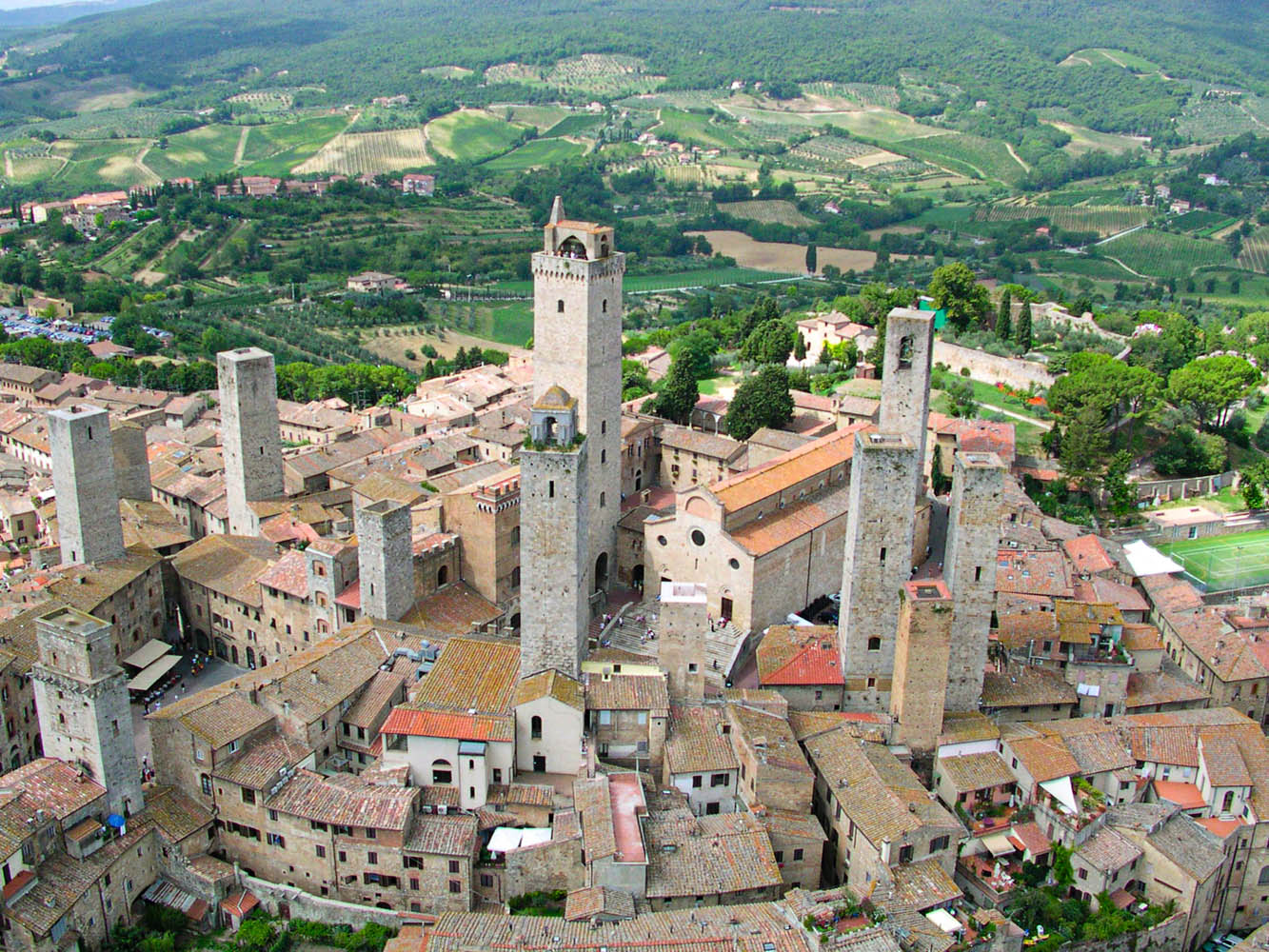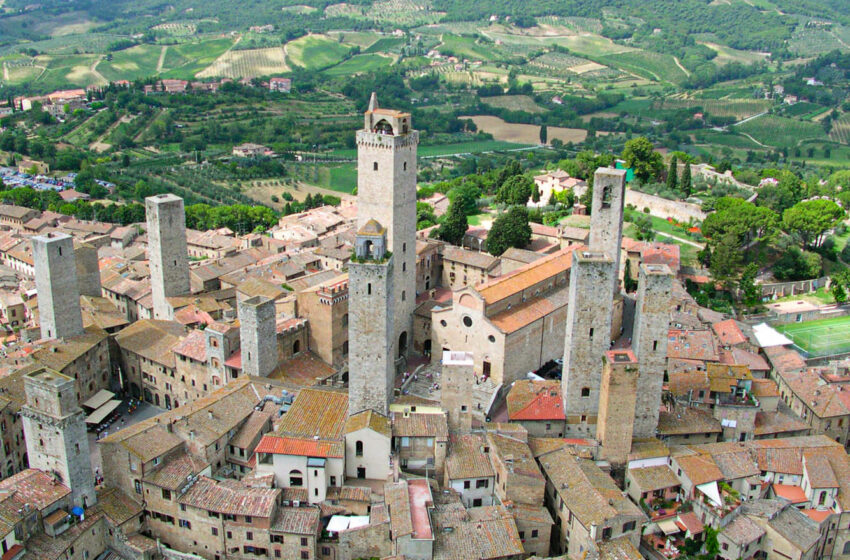
Waking Up in San Gimignano: Between the Middle Ages and Contemporary Art
di Marianna D’Ovidio
Waking up in San Gimignano means watching the sunrise over the green hills of Val d’Elsa, hearing the birds sing, breathing in the thin air that winds between the tall cypresses, living in a space-time reality that feels medieval.
Perceiving the sense of distance: that is the prevailing sensation. The distance from the frenzy of our cities. The quiet of enchanted villages, where the layout of the alleys is just enough to find oneself again.
There are no cars. There are no buses. There are no trams in San Gimignano. There are people. There is history. There are stones in the solitary houses. And there is the wind, that light summer night breeze that skims the buildings.
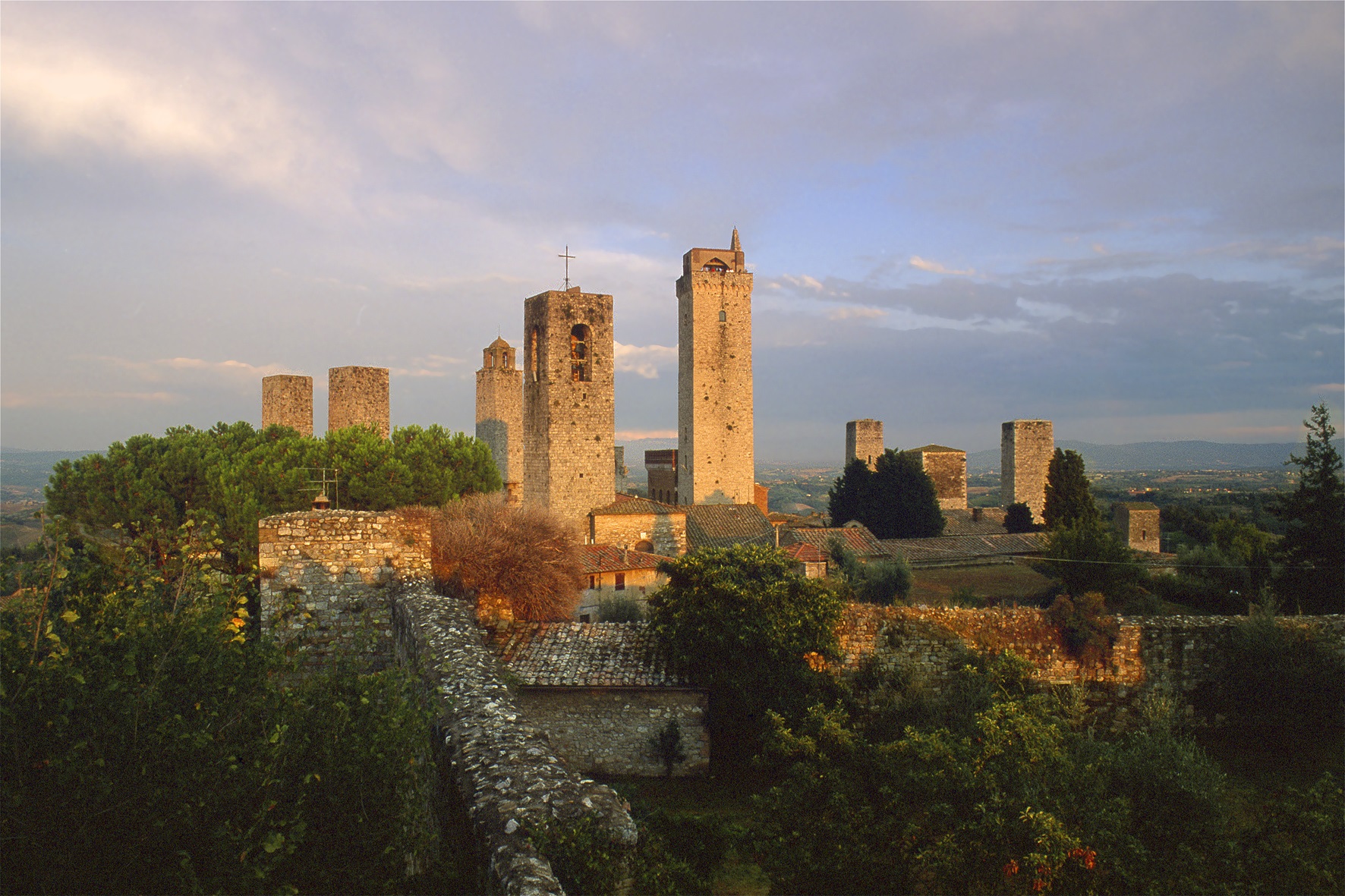
Let yourself go. Relax your mind. Perceive the human dimension. Free your thoughts. Get lost in the paths. Enter the silent churches. Linger in the souvenir shops. Feel the medieval atmosphere on your skin. Rest your eyes on the landscapes of the gentle rolling hills. Eat with friends. Sit in the beautiful venues and savor. This is what you do in San Gimignano (SI).
But such beauty is steeped in history.
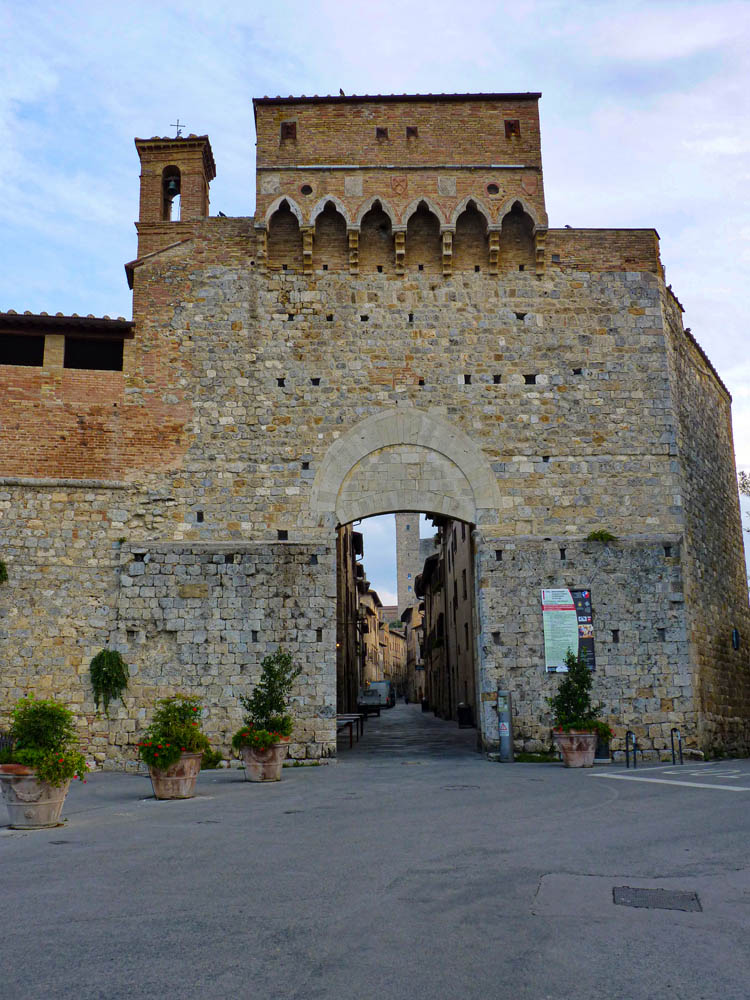
Our journey begins at Porta San Giovanni, leading us to Porta San Matteo, where that small ancient world ends. Four walls were enough to defend a city once, nothing else was needed by the people. It was not like it is now.
When you find yourself in Piazza della Cisterna, dominated by the well that gives it its name, think only of water. The water that flows from those enchanted mountains, a bit acidic to be honest, but sinuously infiltrating the passes and quenching the small— or little—number of people and wayfarers who drew it from the fountains, pure, or from that well. Think that in times of siege, if one wanted to bring a castle or village to its knees, it was enough to contaminate their sources with dead animals or filth, and the world would be nullified.
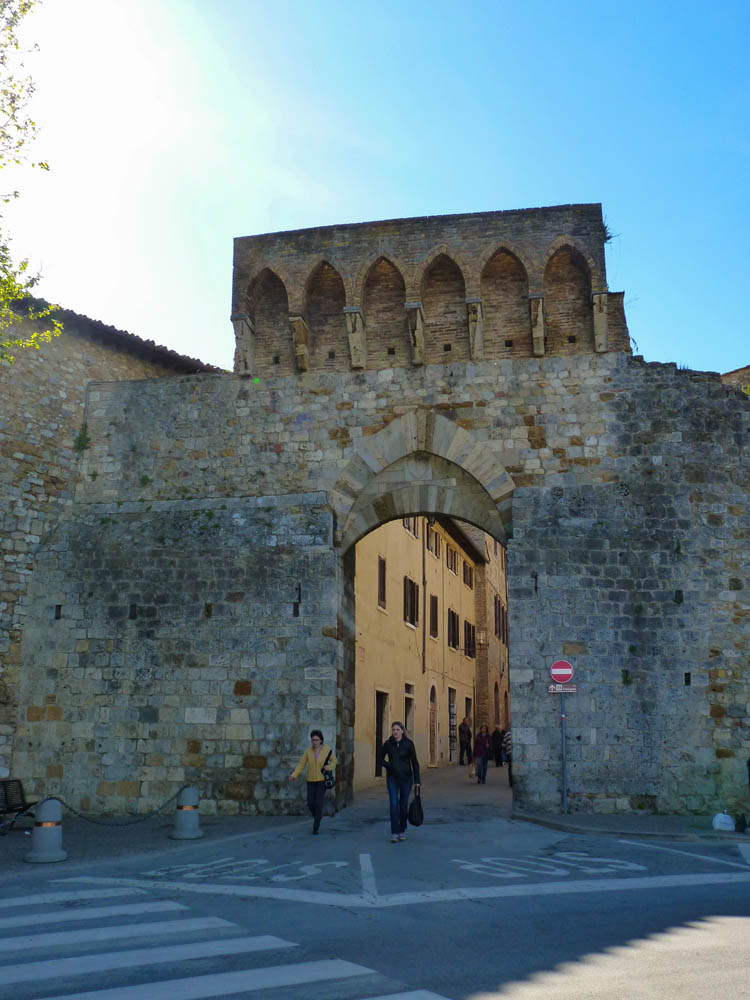
I don’t believe that a traveler from seven hundred years ago could refrain from visiting the cathedral. Those rough dimensions occupying the square named after it have accompanied saints and damned, poor and Christians, rich and dispossessed, in search of spirituality. Enter those spaces and immediately go to the counter-facade to see the Last Judgment by Taddeo di Bartolo from 1393. In the fresco, sins were fixed for eternity in white scrolls emerging from the characters, and humanity’s errors were named. Stop! And look up. To appreciate that tangle of bodies, that chaotic sense of the geography of hell—which we know from Dante, who died just 70 years earlier—and which we have learned to read from medieval paintings.
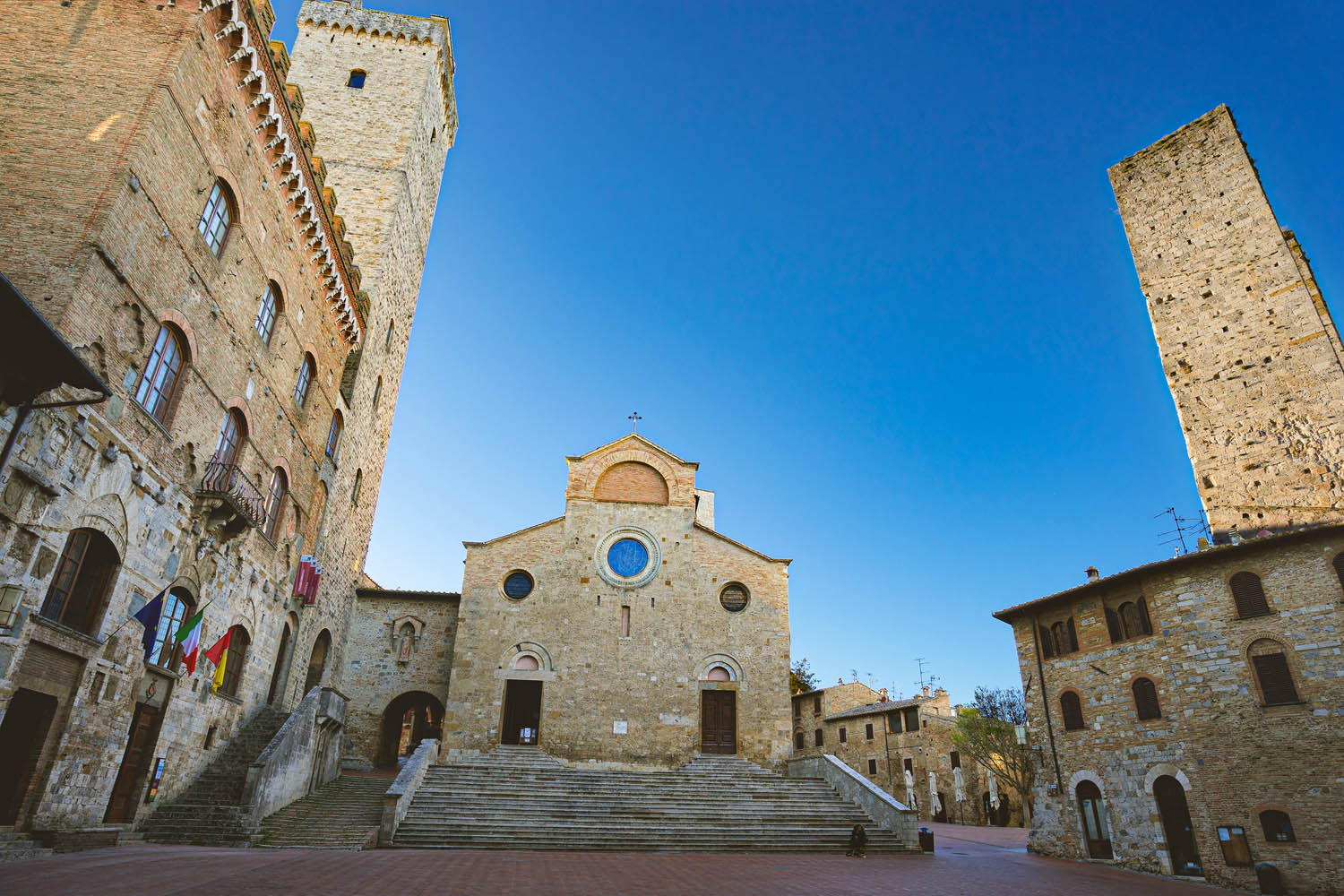
To the right of the central altar, do not miss the chapel of Santa Fina. The young girl lived a life of suffering: an illness struck her at a young age, condemning her to immobility. She lost her mother when she was still young. The deprivations of a life of hardship did the rest and ensured her existence to the honors of the altars. In the frescoes by Domenico Ghirlandaio from the 15th century, you will read her story: from the panels and not from books, because that’s how good advice was conveyed in the Middle Ages, when illiteracy was rampant and news was shouted by the town criers. Giosefina, known as Fina, died in pain on March 12, 1253, a date that coincided with her dies natalis if you consider that, according to legend, the bells rang out to underline the happy day. She is considered the co-patroness of San Gimignano and visiting her is an act of faith and serenity.
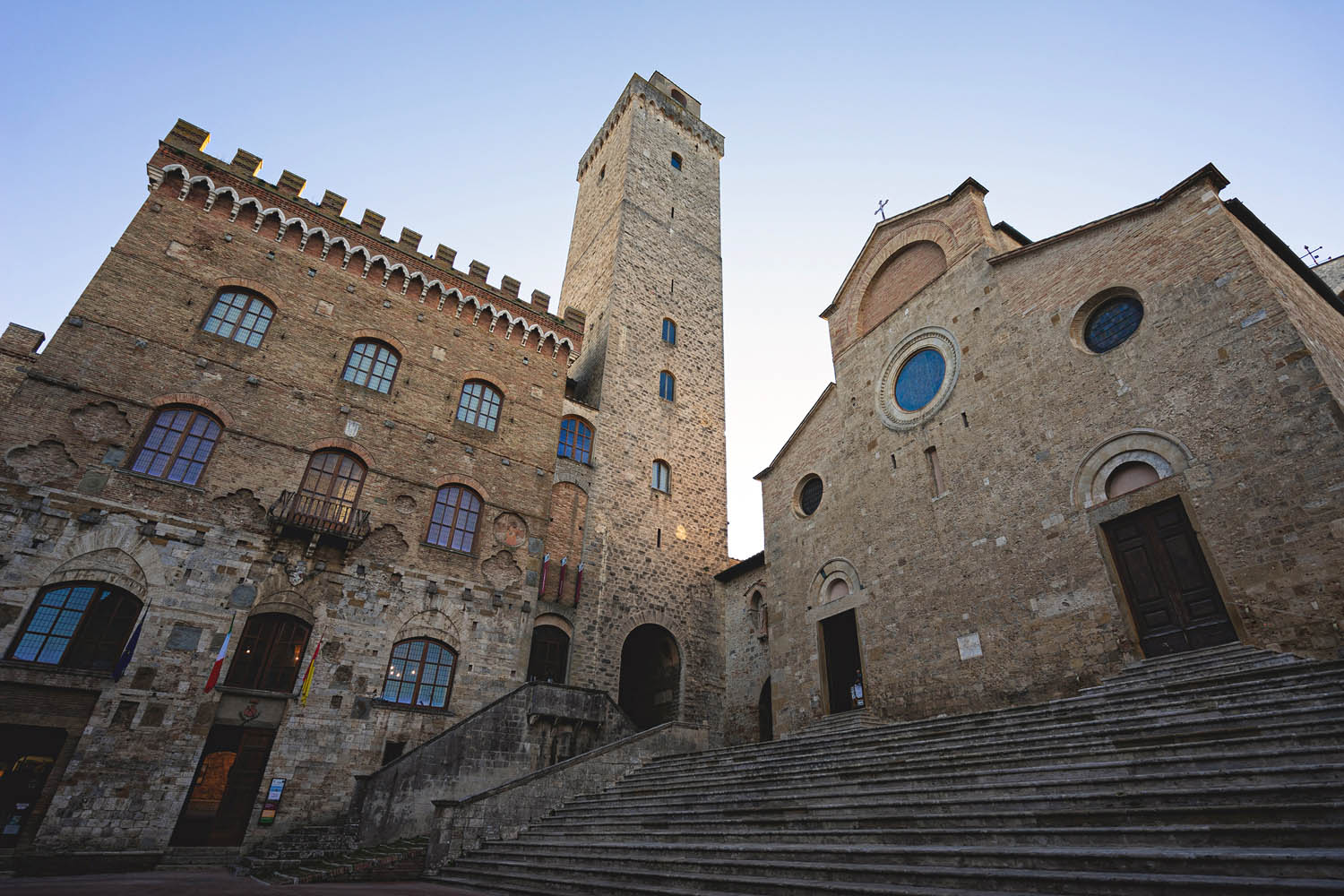
And then go to see another beautiful church, towards Porta San Matteo, dedicated to Saint Augustine. Here too the Middle Ages triumph with timeless frescoes and altars. In the apse basin stand out the stories of the saint, from childhood to death on August 28, 430, told in 17 panels by Benozzo Gozzoli from the 15th century.
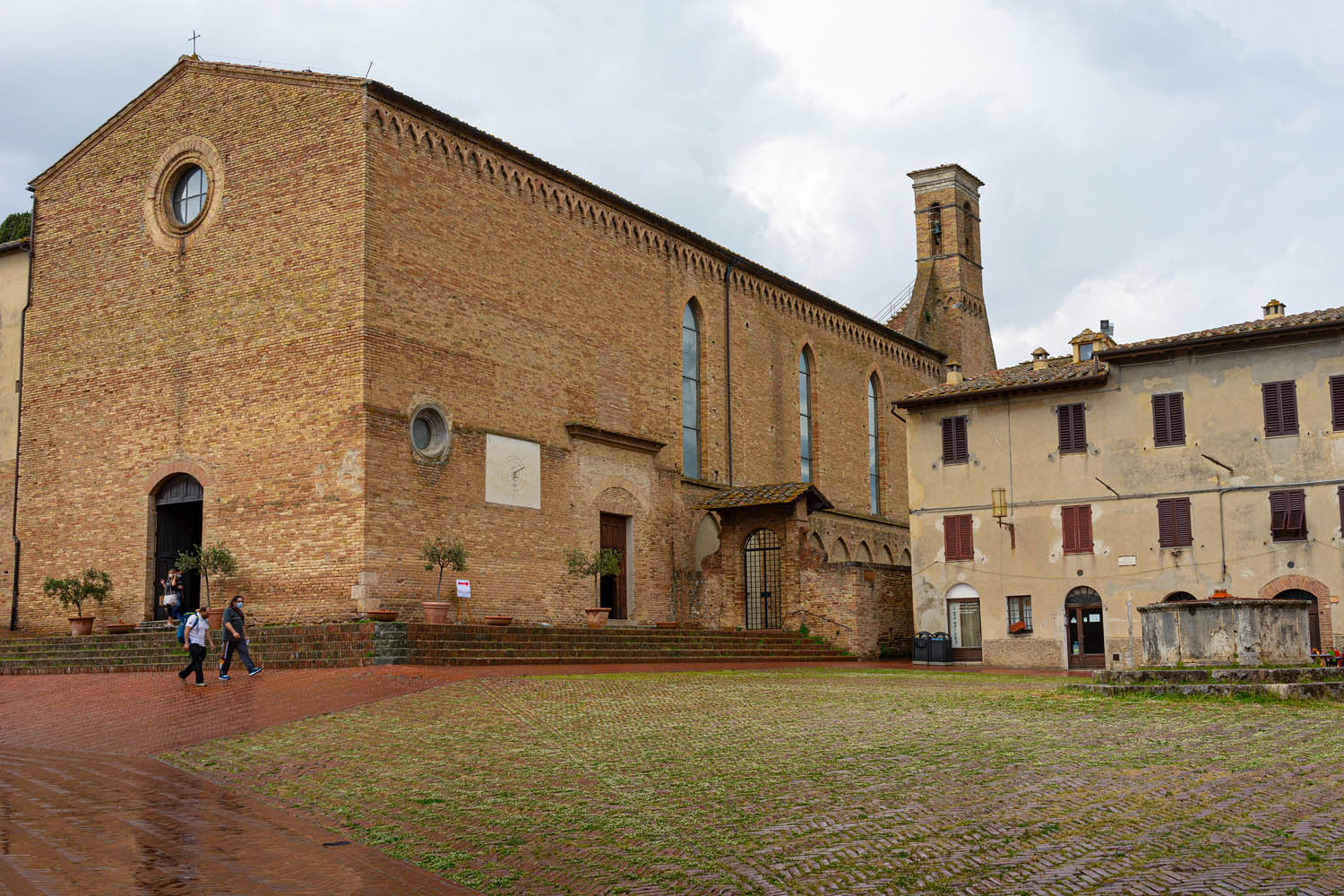
Before leaving the Middle Ages and returning to the contemporary world, don’t forget to climb all the way up. Every respectable medieval town has a tower that dominates the city. The Rocca of Montestaffoli controls San Gimignano and was built by the Florentines when the inhabitants of San Gimignano asked for their help to escape the uncontrolled drama of the plague in 1348.
In San Gimignano, it is possible to savor not only the Middle Ages but also contemporary art.
This is why we invite you to visit Galleria Continua, one of the most interesting contemporary art galleries in Italy, which today boasts 8 locations worldwide.
Until September 15, 2024, at the former cinema of Galleria Continua, you can visit the exhibition “Neither Nor” by Ai Weiwei. Ai Weiwei is a Chinese dissident and versatile artist who can do many things. He is a sculptor, painter, ceramist, photographer, architect, lyricist, director, performer, blogger, investigative journalist, and much more. “Neither Nor” is the title of the exhibition where he reinterprets the great masterpieces of art history with an impressive technique: Lego bricks!
The Last Supper and the Mona Lisa are made by combining many small Legos that very simply resemble the tiles of ancient mosaics. There is a curiosity though: for a long time, Lego banned Ai Weiwei from using those bricks. The company’s policy did not allow their use for political purposes: remember he is a dissenter! His fans, however, have sent him over the years the “dangerous pieces” with which he has created works of high political value.
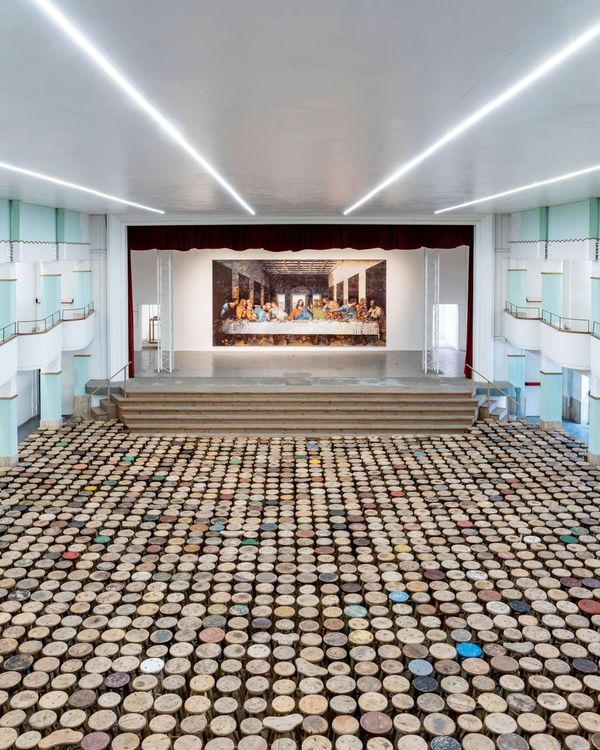
In “The Last Supper” (2022), the author puts his face in place of Judas and refers to the bargaining in the art world. Just as it happened with those 30 pieces of silver with which Judas betrayed Jesus. Did you know that the term betray was born in one way and died in another? Yes, its meaning has changed over the centuries. At first, it simply meant “to transmit,” but only after the “night of the olives” did it take on the negative connotation of “to transmit into the hands of someone” and thus betray.
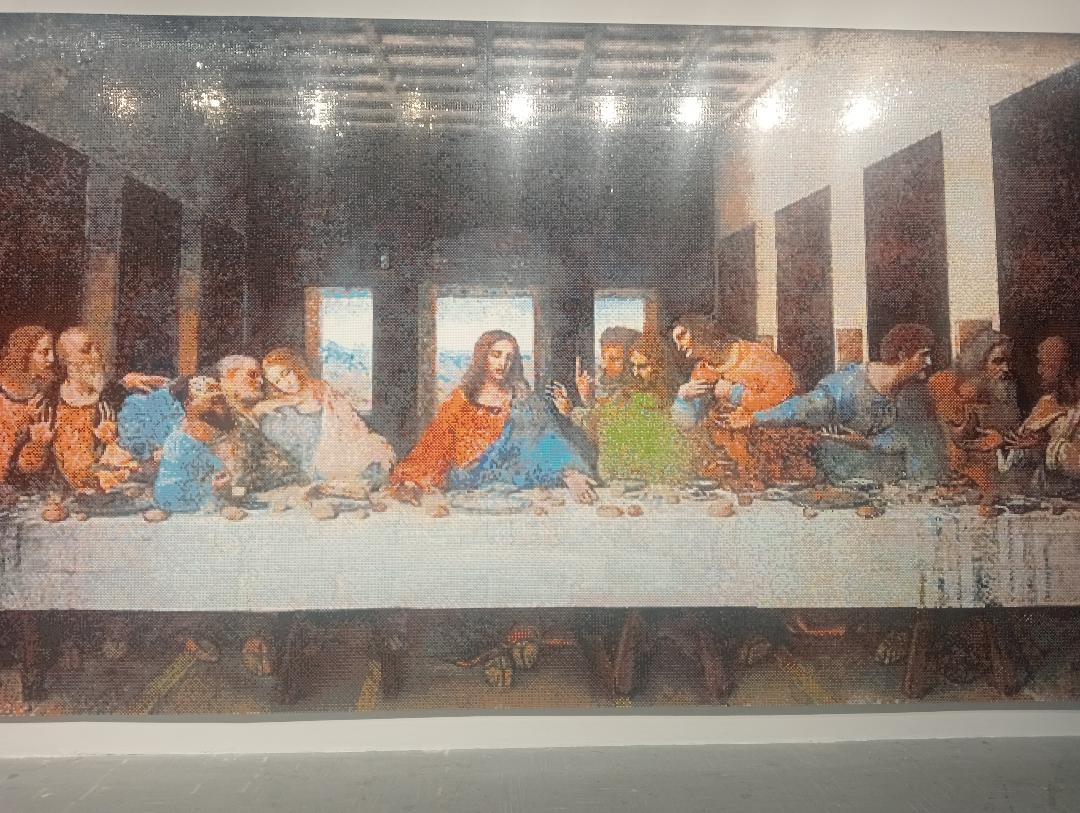
Galleria Continua has several locations, and another is in Piazza Cisterna. Here you will find another exhibition entitled “Anxiety” by Zhanna Kadyrova, a Ukrainian artist reflecting on the theme of war.
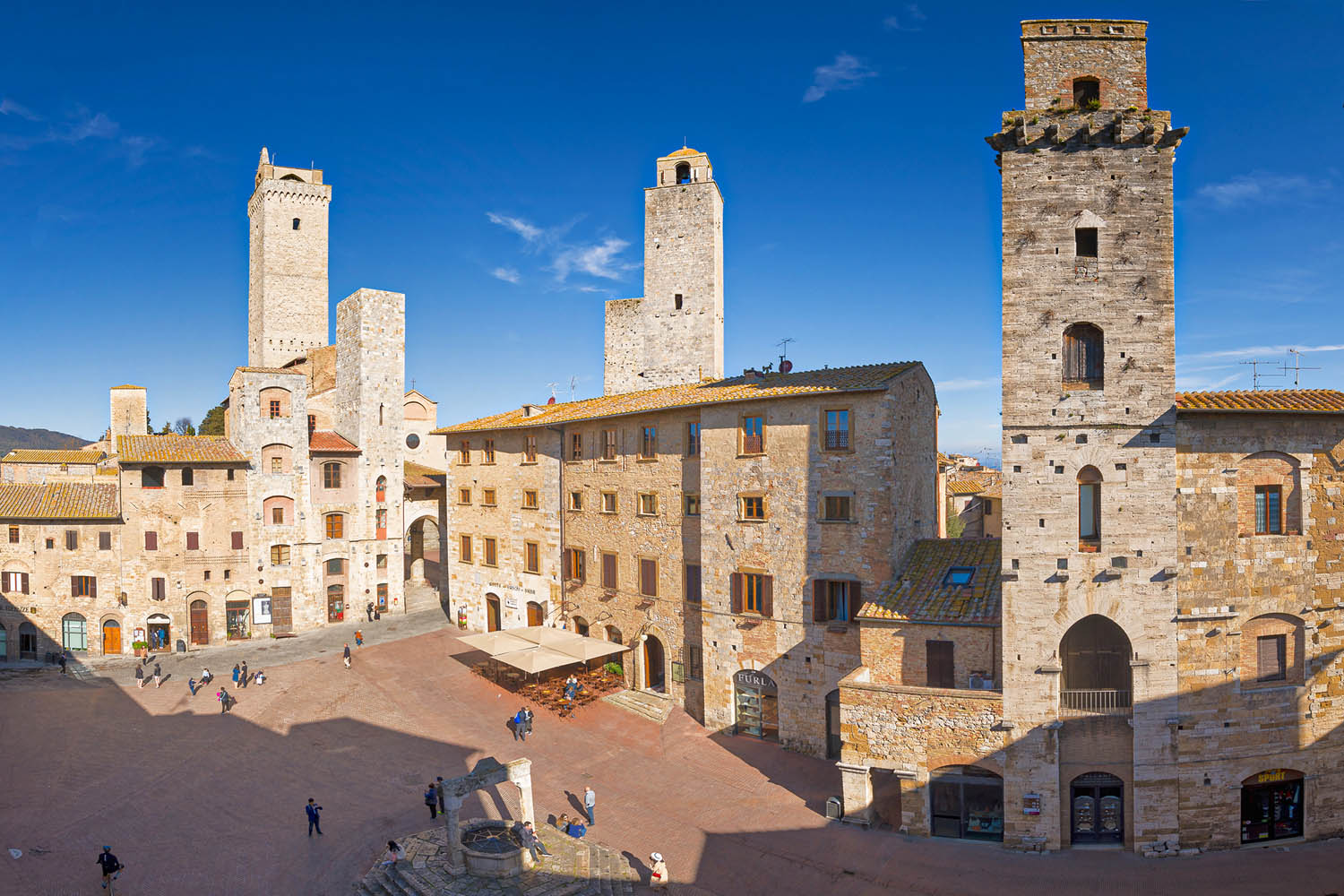
During the early stages of the clashes, Zhanna was forced to seek refuge in a distant place, in Transcarpathia, on the border with Hungary. The valley where she was staying was crossed by the waters of a river, a happy presence in the silence of the woods. These clear waters inspired a project exhibited at the Venice Biennale in 2022. The round and smooth pebbles from the river evoked in Zhanna the loaves consumed in happy moments.
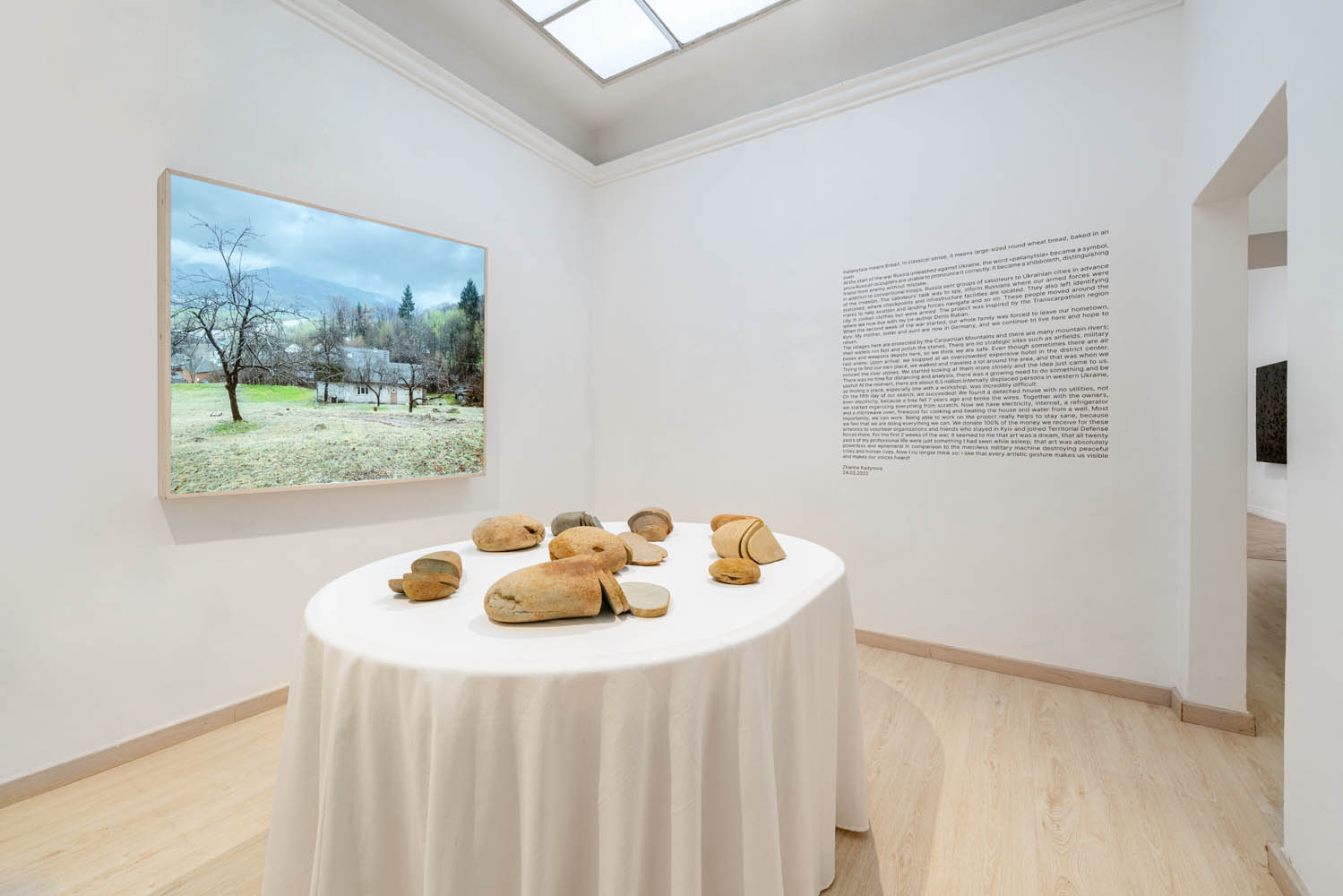
The artist selected some, chose those that looked like loaves, and “sliced” them. As we do every day at home. Only she did not slice bread, but stones! For Zhanna, those fractions of bread (better to say stones) represent the signs of a dismembered social identity. “Palianytsia 2022,” the title of the work and loaf in Ukrainian, has become a symbol because it allows friends to be recognized from enemies: only Ukrainians can correctly pronounce its name.
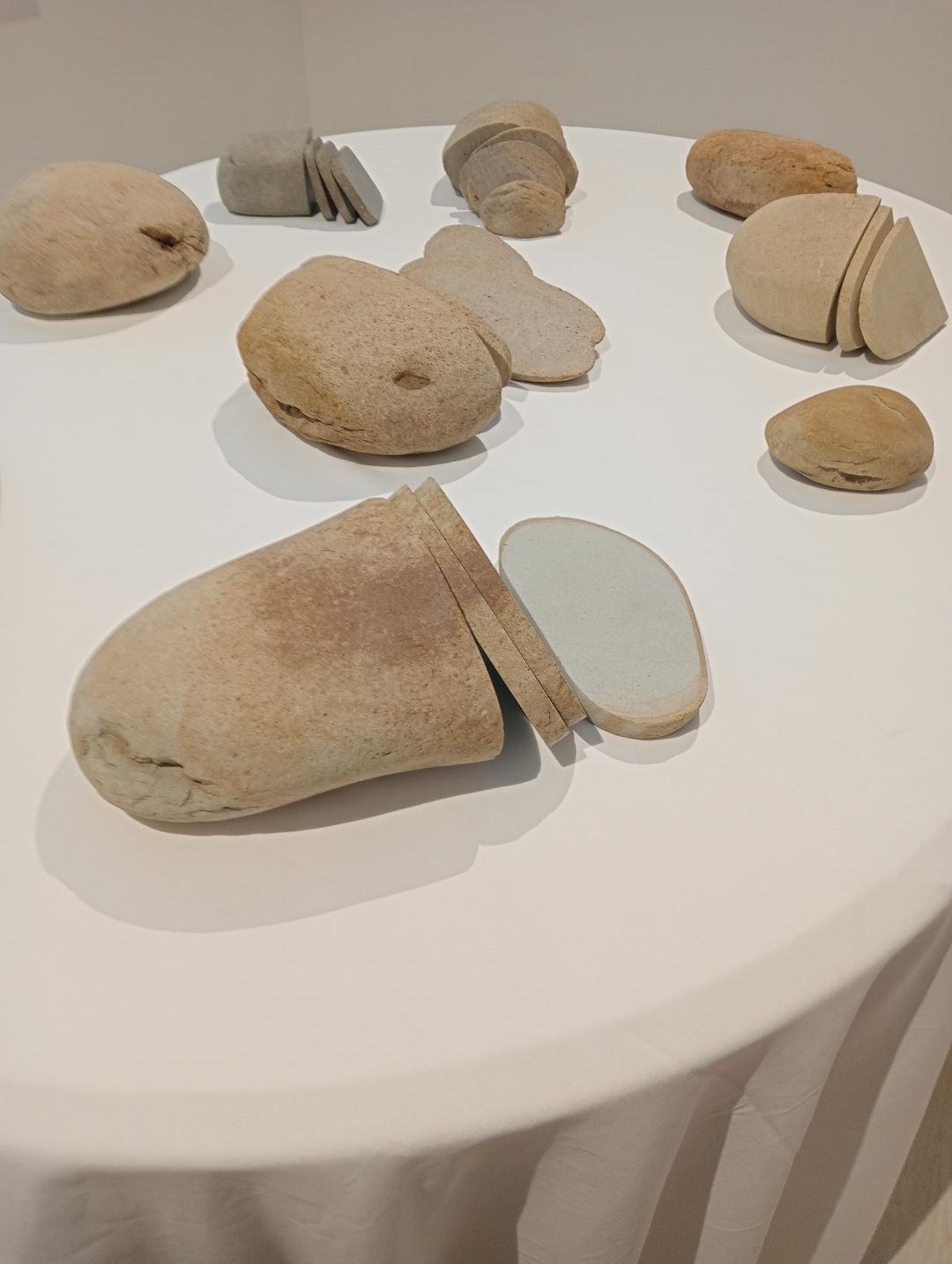
Another work that catches our attention is “Data Extraction” (2023), a portion of asphalt taken from the city of Irpin, a satellite city of Kiev, occupied by the Russians and a war zone. In the black of the tar, you will find the shrapnel from the bombs dropped by the Russians. The geographical coordinates of the extraction sites in the title represent the figures of widespread suffering.
Before leaving San Gimignano, we invite you to go to the Arco dei Becci, another venue of Galleria Continua, where you can visit “The citrus project,” on display still in May 2024. 14 artists reinterpret the tasty fruit in 14 works. The exhibition is curated by Vincente Todolì, who has created, near Valencia, an orchard of over 500 different citrus fruits, spread over an area of 60,000 hectares: a plantation considered the largest collection in the world.
To conclude this story, inspired by the lemons, we like to quote “The Lemons” by Montale, “which draw the meaning of what we have recounted:
“Here of the amused passions / miraculously the war is silent, / here even we poor have our part of wealth / and it is the scent of the lemons.”
Before leaving San Gimignano, remember to take one last look at the Ardinghelli Towers where the essence of this merchant village, which never ceases to amaze, survives.
Credit foto: ELA BIALKOWSKA, OKNO STUDIO, SOFIA GIUNTINI, ANDREA MIGLIORINI
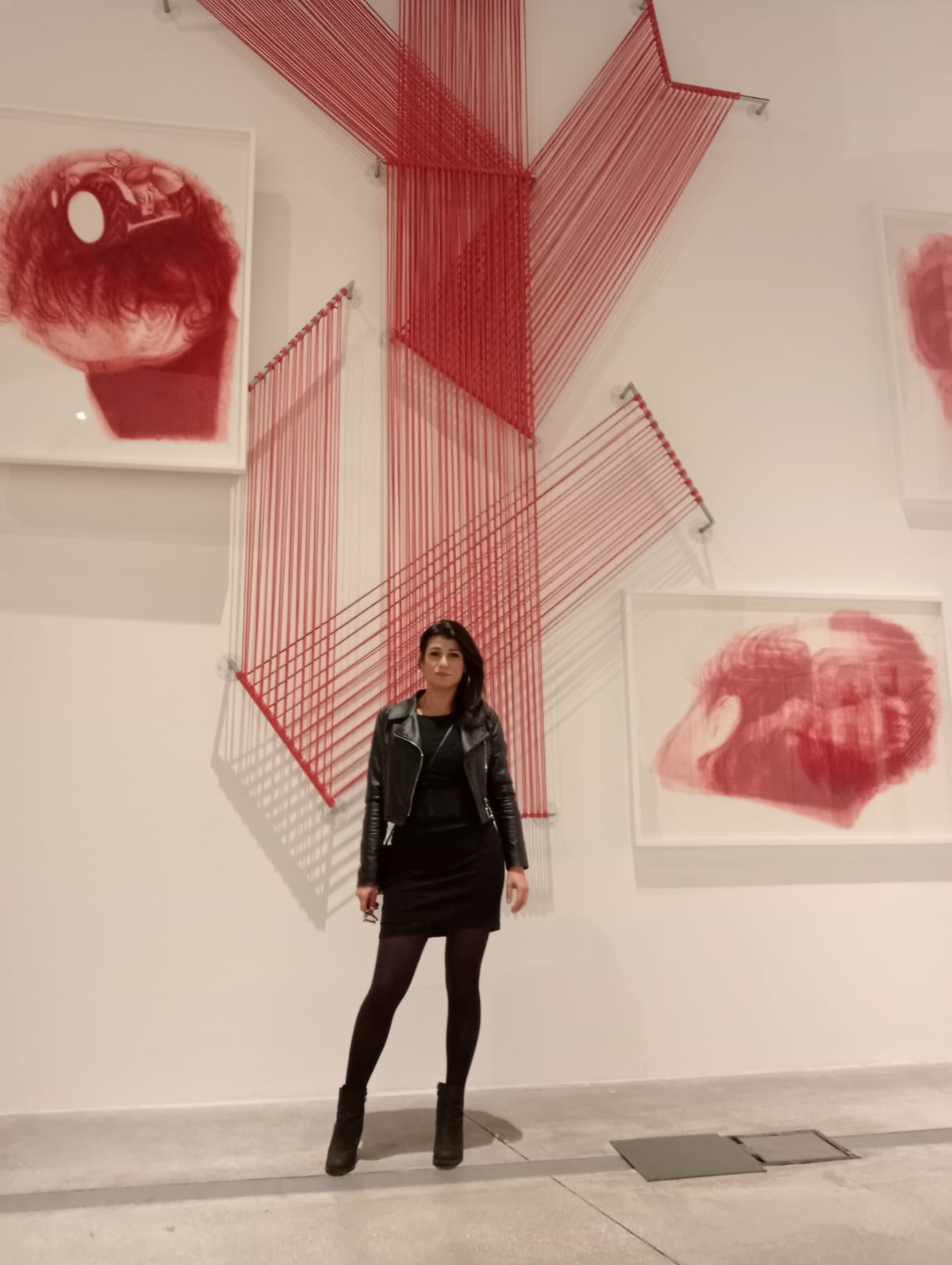
Marianna D’Ovidio
Marianna D’Ovidio graduated in literature and specialized in classical archaeology. She deals with contemporary art history, creating a mixture of meaning between the two worlds. Born in Abruzzo, she is strongly seduced by elsewhere and alternative paths of cultural heritage knowledge.
Giornalista detentore dal 2015 del Guinness World Records TV e Ambasciatore Borghi più Belli d’Italia.
Leggi in:
![]() Italiano
Italiano






